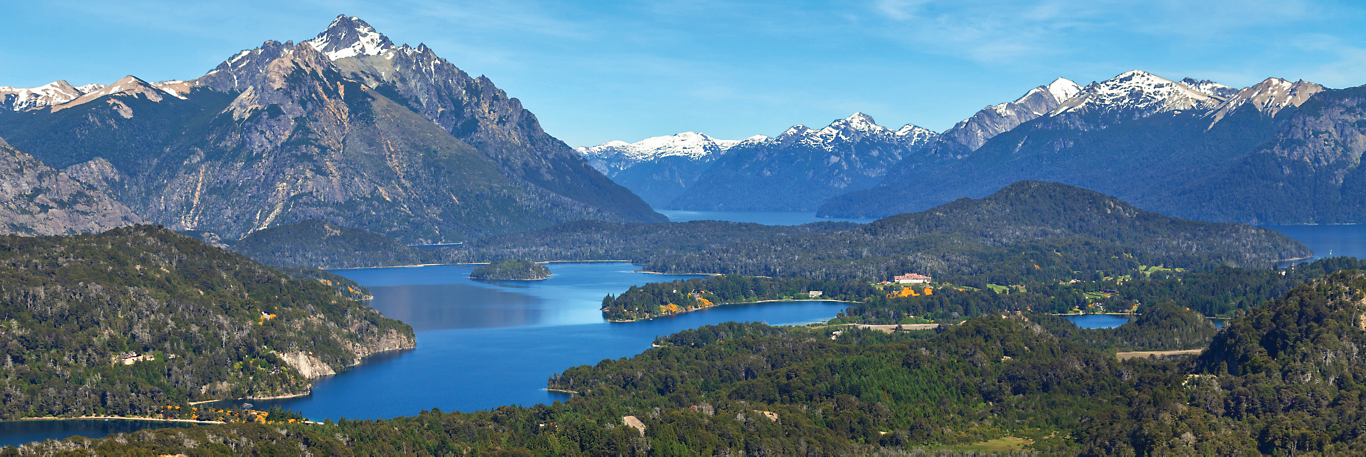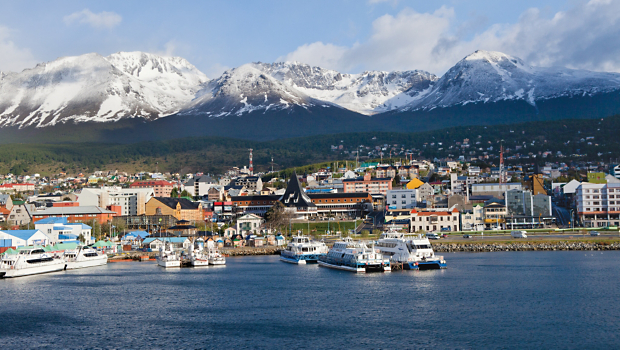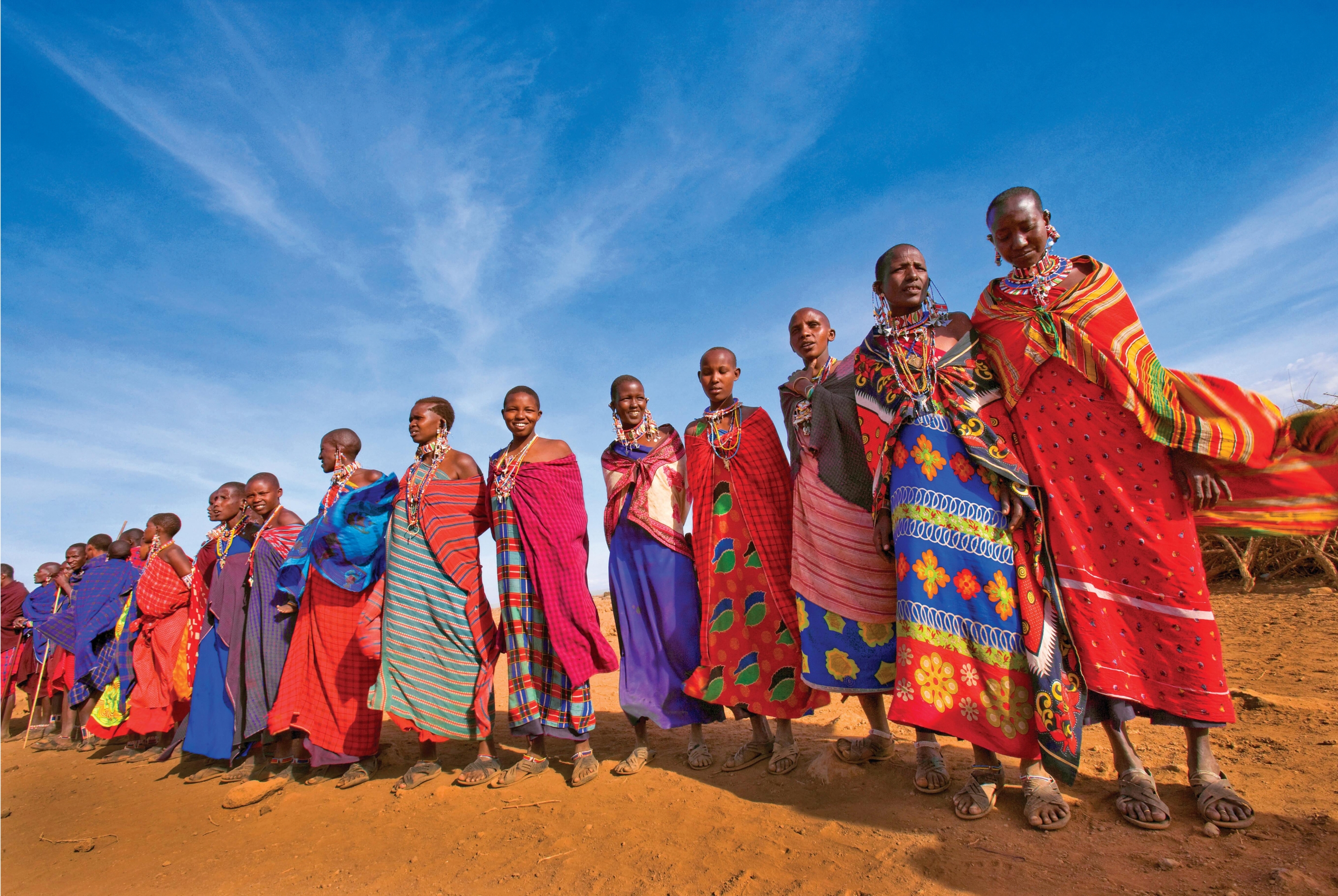You’re receiving this message because your web browser
is no longer supported
We recommend upgrading your browser—simply click the button below and follow the instructions that will appear. Updating will allow you to accept Terms and Conditions, make online payments, read our itineraries, and view Dates and Prices.
To get the best experience on our website, please consider using:
- Chrome
- Microsoft Edge
- Firefox
- Safari (for Mac or iPad Devices)

argentina
Overseas Adventure Travel, the leader in personalized small group adventures, has been changing lives through travel since 1978. Our 8 Argentina adventures will take your small group into the heart of a destination to venture where the big tour groups can’t. No matter which adventure you choose, O.A.T. always offers our travelers:
- Personalized travel experiences, with options to arrive early, stay later, add pre- or post-trip extensions, stopover in popular cities, and more.
- Small group of no more than 25 travelers, allowing us to take you off the beaten path and immerse you in local culture.
- Adventures tailored to the solo traveler, with FREE or low-cost Single Supplements.
- Expert Trip Experience Leaders, residents of the region you visit who will share their insights and bring your destination to life.
From the European flair of Buenos Aires, to the breathtaking natural beauty of Bariloche, you can experience all of this and more when you journey to Uruguay with O.A.T.
Your FREE Personalized Argentina Travel Planning Guide
Your FREE Personalized Argentina Travel Planning Guide is on its way
Want to continue learning about Argentina? Return to our Argentina destination page.
Go Back To ArgentinaPlease note: To complete your registration, check your email—we sent you a link to create a password for your account. This link will expire in 24 hours.
Compare Our Adventures
Click 'Select to Compare' to see a side-by-side comparison of up to adventures below—including
activity level, pricing, traveler excellence rating, trip highlights, and more

Spend 9 days in Argentina on
New! Argentina & Chile’s Rugged North: From the Andes to the Atacama Desert
O.A.T. Adventure by Land
Argentina: Buenos Aires, Cafayate, Cachi, Salta, Purmamarca | Chile: San Pedro de Atacama, Santiago

Spend 7 days in Argentina on
The Wilderness Beyond: Patagonia, Tierra del Fuego & the Chilean Fjords
O.A.T. Adventure by Small Ship
Argentina: Buenos Aires, El Calafate, Perito Moreno Glacier, Ushuaia | Chile: Torres del Paine, Puerto Natales, Beagle Channel, Glacier Alley, Cape Horn, 4-night Chilean Fjord Cruise

Spend 7 days in Argentina on
Chile & Argentina: The Andes to Patagonia
O.A.T. Adventure by Land
Argentina: Buenos Aires, Bariloche, El Calafate | Chile: Puerto Varas, Chiloé Island, Punta Arenas, Torres del Paine National Park

Spend 5 days in Argentina on
Antarctica's White Wilderness
O.A.T. Adventure by Small Ship
Argentina: Buenos Aires, Ushuaia, Tierra del Fuego National Park | Antarctic Expedition Cruise: Beagle Channel, Drake Passage, Antarctic Peninsula Region, South Shetland Islands

Spend 5 days in Argentina on
Antarctic Circle Expedition: Journey through Antarctica
O.A.T. Adventure by Small Ship

Spend 7 days in Argentina on
New! Exploring South America: Rio, Buenos Aires, Patagonia & Chilean Fjord Cruise
O.A.T. Adventure by Small Ship
Brazil: Rio de Janeiro, Iguassu Falls | Argentina: Buenos Aires, El Calafate | Chile: Torres del Paine National Park, Santiago
Spend 2 days in Argentina on our
Pre-trip Extension
Buenos Aires & Uruguay’s Colonial Past
Buenos Aires & Uruguay’s Colonial Past

Spend 3 days in Argentina on our
Post-trip Extension
Iguassu Falls: Thundering Cascades of Argentina & Brazil
Iguassu Falls: Thundering Cascades of Argentina & Brazil

Compare Adventures
Add Adventure
including international airfare
per day
*You must reserve the main trip to participate on this extension.
**This information is not currently available for this trip. Please check back soon.
You may compare up to Adventures at a time.
Would you like to compare your current selected trips?
Yes, View Adventure ComparisonArgentina: Month-By-Month
There are pros and cons to visiting a destination during any time of the year. Find out what you can expect during your ideal travel time, from weather and climate, to holidays, festivals, and more.
Argentina in December-March
The Southern Hemisphere’s summer is the high season in Argentina, when warmer temperatures and longer daylight hours beckon visitors to the country’s sweeping steppes and rugged coasts. The weather is comfortable at night, with temperatures lingering in the 60s, but it’s not unusual for daytime temperatures to reach the sweltering triple digits. This is also when locals have school breaks and take their annual vacations, so you can expect to find plentiful crowds throughout the country—it’s wise to book hotels several months in advance to ensure availability.
But with the high season’s crowds come high spirits, too: The holiday season lends a jubilant air to this predominantly Catholic country, and a variety of free events and festivals add to the celebrations. January and February are some of the best (and warmest) times of year to visit notoriously chilly Patagonia, when nature is in bloom and emerald lakes dazzle beneath cerulean skies.
Holidays & Events
- December 25: Christmas
- January 1: New Year’s Day
- February: Argentina’s Carnival celebrations may lack the international recognition of its northern neighbor Brazil’s, but as a Catholic nation, Argentina takes its Carnival festivities seriously. The biggest Carnival in the country is held in Gualeguayachú, but in towns and cities throughout Argentina, Carnival is a colorful occasion celebrated with lively parades and costumed performers in anticipation of the Lenten season.
- Mid-March: Held annually during the second week of March, the Fiesta Nacional del Ternero (National Festival of the Calf) is a meat lover’s dream. Celebrating Argentina’s proud tradition of gaucho culture, the festival features rodeo competitions, folk songs, traditional dancing—and, of course, a massive open-air beef roast.
- Late February: During Buenos Aires Fashion Week (BAFWeek), models and fashionistas descend upon Buenos Aires to strut their stuff and flaunt the latest styles by leading Argentine designers. BAFWeek showcases both high-profile fashion houses and emerging designers, and adds an element of haute couture to the city’s already elegant people-watching.
Must See
Wine lovers will rejoice in a visit to Mendoza—the heart of Argentina’s wine country—during February and March, when the country’s famed Malbecs and other red wines are harvested. Argentina’s summer months are also a wonderful time to visit national parks such as Torres del Paine and Alerces, when temperatures are at their highest of the year and the parks’ lakes and hiking trails are most accessible.
Watch this film to discover more about Argentina
Argentina in April-June
April, May, and June mark Argentina’s autumn, and usher in splendid fall foliage that drapes the country in seasonal hues. Like the crowds, the humidity of summer disappears during these months, replaced with pleasant daytime temperatures in the 60s and 70s and cool, crisp evenings.
This is a wonderful time of year to explore Argentina’s stunning nature: Take in the rusty reds and fiery oranges of fall on gloriously empty Andean hiking trails, and enjoy a variety of local festivals. Plus, the shoulder season brings below-average room rates, meaning your dollar will stretch further.
Must See
The Andes—always a must-see—simply come alive during these months with the vibrant fall foliage.
Watch this film to discover more about Argentina
Argentina in July-August
Winter in Argentina is mild throughout the country: You’ll find daytime highs hovering in the 50s and 60s, and nighttime temperatures above 45 degrees. This is a particularly good time to visit Buenos Aires, as the crisp air—a welcome reprieve from the humidity found throughout much of the year here—makes ideal weather for strolling the capital’s elegant boulevards and dining in curbside cafes.
Although the weather is colder during these months, most attractions remain open through the off-season, and you’ll have delightfully few tourists to compete with. Skiers from the Northern Hemisphere, rejoice: Ski season in “The Switzerland of South America” begins in July.
Holidays & Events
- July 9: Argentina’s Independence Day marks the country’s liberation from Spanish colonial rule. One of the most important days in the Argentine calendar, Independence Day is celebrated with patriotic parades and military demonstrations. It is also a popular day for family reunions, none of which would be complete without a hearty bowl of locro—a traditional stew made of corn, pumpkin, beans, and meat.
- Mid-August: Hailed as the world’s largest tango festival, the Buenos Aires Tango Festival is actually two events in one: It begins as a nine-day fiesta featuring tango shows and milongas (dances) geared to dancers (and mere appreciators) of all experience levels; then, the festival hosts the professionals-only Tango World Cup, where the best in the business try to stomp and sway their way into tango glory. Whether you’re ready to put on your dancing shoes or would rather watch from the sidelines, the Tango Festival is an exciting introduction to the passionate, sensual culture of Argentina.
Must See
If you plan to visit during this off-season, you won't want to miss the lively Buenos Aires Tango Festival, which begins in August.
Watch this film to discover more about Argentina
Argentina in September-November
September, October, and November are Argentina’s spring months, and a sweet spot for visitors. The rush of tourists won’t arrive until December, meaning affordable hotel rooms abound and crowds are thin, and yet the weather is pleasantly warm: Temperatures fluctuate between the 60s and 80s during these months.
Spring also brings its signature colorful bloom to both the city and the country. In Buenos Aires, you’ll find the city’s beautiful violet jacaranda trees bursting into life; outside the capital, Cordoba and Torres del Paine are carpeted with greenery and gush with swollen rivers.
Must See
If visiting during Argentina’s spring, be sure to venture north to the Brazil border to Iguassu Falls: The Fall’s many cascades (and the lush surrounding jungle) flourish in the warmer weather. Horticulturalists will want to stop by the Paseo de Rosedal in Buenos Aires to literally smell the roses, as they are in full bloom this time of year.
Watch this film to discover more about Argentina
Average Monthly Temperatures
High Temp Low Temp
Argentina Interactive Map
Click on map markers below to view information about top Argentina experiences
Click here to zoom in and out of this map
*Destinations shown on this map are approximations of exact locations
Buenos Aires
Argentina’s capital city retains a distinctly European flavor; some call it the “Paris of the South.” Italian- and French-style palatial architecture adorns the well-planned streets, radiating outward from the Plaza de Mayo, which commemorates the fight for Argentinean independence, and houses the seat of the current government. Travelers from around the world flock to Buenos Aires to visit iconic locations like the colorful and bohemian La Boca district, and Recoleta Cemetery, a baroque city of the dead where the famous first lady Eva Peron and other revered Argentinians have been laid to rest.
Buenos Aires’ people—nicknamed porteños, or “people of the port”—exhibit European sensibilities, too. While the city is no stranger to hustle and bustle, its citizens know how to slow down and take pleasure in the simple things. By day, you’ll find the city’s parks and cafes overflowing with locals and visitors bonding over mate, the famous and invigorating herbal brew which keeps Argentina moving. In Argentina, mate is more than just a drink; it’s a key part of social life, and if you haven’t had it here, served in a traditional gourd and sipped through a silver straw, you haven’t really had it at all.
At night, porteños take their time to get ready—similar to Spain, restaurants don’t start to fill until 9pm, and the parties don’t get into full swing until well after midnight—but once they get going, they don’t stop. On any given night in Buenos Aires you’ll find dozens of milongas, or dance parties, where tango reigns supreme well into the dawn.
The easy pace of life in Buenos Aires belies a deeply rooted pride in their nation. This passion affects not just art, music, dance, and cuisine, but civic duty, as well. By law, every Argentinean over the age of 18 is required to vote in elections.
Explore Buenos Aires with O.A.T. on:
- Antarctic Circle Expedition: Journey through Antarctica
- The Wilderness Beyond: Patagonia, Tierra del Fuego & the Chilean Fjords
- Chile & Argentina: The Andes to Patagonia
- Antarctica's White Wilderness
- New! Exploring South America: Rio, Buenos Aires, Patagonia & Chilean Fjord Cruise
- Pre Trip:Buenos Aires & Uruguay’s Colonial Past on New! Brazil in Depth: Rio de Janeiro, Amazon Cruise & the Pantanal
Patagonia
Patagonia is the ruggedly beautiful region encompassing the southernmost portion of South America, from the Pacific coast of Chile to the Atlantic shores of Argentina. It’s a colorful mélange of wind-blasted steppes, blooming expanses of lush yellow flowers, icy blue glaciers, and craggy white Andean peaks.
At the very edge of the continent you’ll find Tierra del Fuego, the “Land of Fire” at the end of the world. The archipelago was given its name by Ferdinand Magellan, who passed through on his famous mission to circumnavigate the globe. Although, as the shipwrecks dotting the landscape will attest, Tierra del Fuego’s treacherously narrow straits have been the final stop for many less successful expeditions, too.
In the southwest, on the shores of Lago Argentino, lies El Calafate, a chaotic landscape carved into a series of interconnected fjords and channels by volcanic eruptions and glacial activity.
And just 50 miles away you’ll find one of Patagonia’s must-see attractions: Perito Moreno Glacier, an ever-changing pale blue wall of ice at the heart of Los Glaciares National Park. Nearly 200 feet tall and 20 miles long, Perito Moreno is an unforgettable force of nature, known mostly for its ice calving; periodically, massive chunks of ice will break off and fall from the glacial façade, crashing deafeningly into the waters of Lago Argentino below. It’s an experience unlike any other, and elevated walkways throughout the park offer visitors the perfect vantage point to watch the show.
Explore Patagonia with O.A.T. on:
Ushuaia

Ushuaia, which translates to “bay that stretches into the sunset” is a bustling port city at the end of the world. Although most people who come here are on their way to somewhere else—the city is the gateway to Antarctica, and Tierra del Fuego National Park is only 7 miles away—Ushuaia’s not without its own independent charms.
Sitting on the edge of the Beagle Channel, the city boasts beautiful bays and beaches, as well as dramatic mountain views. Visitors can take advantage of opportunities to seek out the local unique wildlife, including colonies of Magellanic and Gentoo penguins, and about 20 species of mammal, including red foxes, otters, and even Canadian beavers, imported in an (unsuccessful) effort to kick start a local fur trade.
Explore Ushuaia with O.A.T. on:
Bariloche

Bariloche is a sweet taste of the Alps tucked away into the foothills of the Andes. Nicknamed “Little Switzerland,” the relatively young city—founded just over 100 years ago in 1902 by primarily German-speaking immigrants—exhibits a clear European influence in its wood-and-stone architecture and cobblestone streets.
The city’s settlers brought their chocolatiering secrets with them, too. Bariloche is the largest chocolate producer in Argentina, and candied delicacies can be found in shops throughout the city, concentrated especially on Mitre Avenue, known to Argentineans as “The Avenue of Chocolate Dreams.”
Beneath Bariloche’s gentle façade, however, hides a darker past; at the end of World War II, some Nazis treated the city as a hiding place in their flight from justice. In the decades following Germany’s surrender, stories and controversies of exposed war criminals have arisen over time.
Outside of the city limits, outdoor enthusiasts will find plenty to do in this region, including skiing, hiking, horseback riding, and whitewater rafting. Travelers can also ride a chairlift to the summit of nearby Campanario Hill for a breathtaking view of the panorama below. Bariloche is surrounded by some of Argentina’s most beautiful scenery, including Nahuel Huapi Lake, Gutierrez Lake, and Moreno Lake, as well as the Andean peaks of Tronador, Cerro Catedral, and Cerro Lopez.
Explore Bariloche with O.A.T. on:
Traveler Photos & Videos
View photos and videos submitted by fellow travelers from our Argentina adventures. Share your own travel photos »


